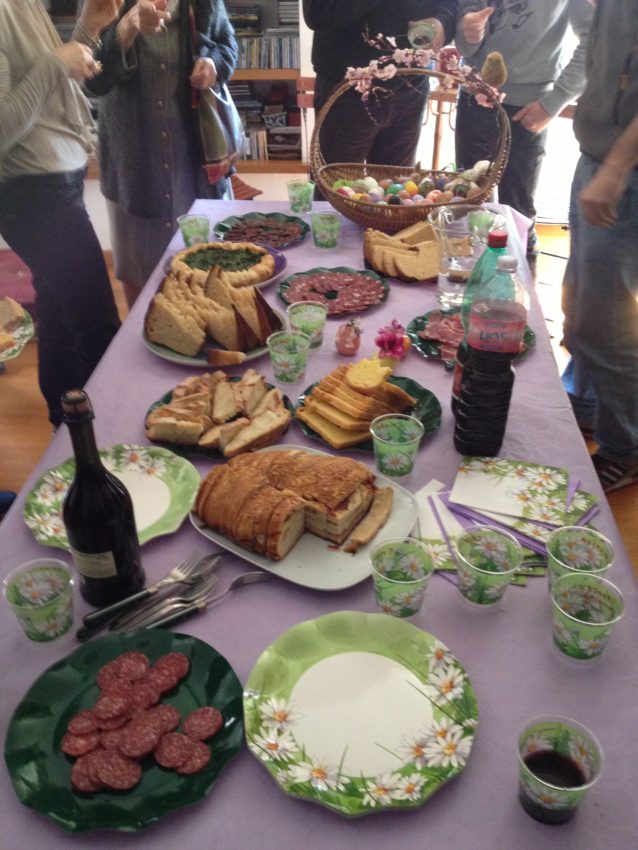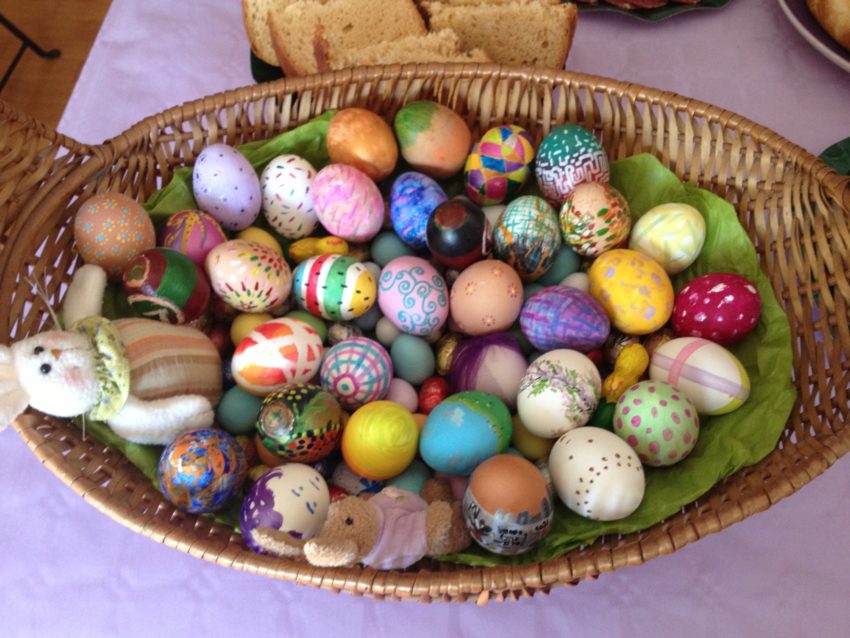Retired in Rome Journal: Easter Sunday is a time for chow, not church


Easter was never big where I grew up. I attended Sunday school until my dad saw it conflicted with morning NFL games, which helped lead me to a lifetime of heathenism, sports writing and a hatred for the state of Nebraska. Easter at my house in Eugene, Ore., meant one morning a year hunting for chocolate Easter eggs and finding them behind seat cushions all the way into early fall.
(Remarkably, they still taste good after they’ve been sitting under your ass for six months. Chocolate Easter eggs have the shelf life of Ivory soap.)
Now that I’m living across the river from the capital of the Catholic world, Easter has a new meaning. In Rome, it’s the biggest feast of the year.
Yes, Easter here has everything to do with food. Religion is just the excuse, kind of like in junior high when I went on church retreats because pretty girls were on the trip. The Catholic Church has much more influence in the Philippines and Brazil than it does in its own neighborhood. Church attendance in Italy is hard to nail down. A Gallup poll 10 years ago put the percentage of Italians attending church every Sunday at 31 percent, 12 below the U.S. A more recent poll conducted by the Patriarchate of Venice, which surveyed attendees in 619 churches, put the number at 23 percent.
Of course, that includes more traditional Italian regions such as Sicily, Abruzzo and Campagna. If they surveyed churches in Rome they’d have a tough time getting enough people to play a soccer game, let alone conduct an accurate survey. For a year and a half I lived one block from the Vatican. St. Peter’s was my local church. The majority of people in St. Peter’s on Sunday always seemed like they hopped off an American Express bus.
It’s not hard to see why. The Catholic Church has passed on its prehistoric dogma from one pope to another for nearly 2,000 years, with none — until now — having the foresight to modernize enough to attract a new generation. How were young urban Italians going to react when John Paul II went to Tanzania in 1990, on a continent where, according to AVERT, a United Kingdom-based HIV and AIDS charity, 5.5 million people suffered from AIDS, and told them using condoms was “evil”?
The Africans didn’t listen and the Italians still don’t. The birth rate, according to Italian government statistics, is 1.41 percent. That’s 203rd out of 224 countries.
Romans look at St. Peter’s for art, not a guiding light.
But the church promotes a swell breakfast.
I took part in Sunday’s. Alessandro Castellani, my good sportswriting bud from ANSA, Italy’s wire service, invited me to his brother’s for a typical Easter breakfast. This is a huge deal. Italian breakfasts normally consist of a cornetto and a capppuccino. I may add some cereal or a couple eggs if I go to the gym in the morning. That’s it. It’s one reason only one-third of Italy’s population is overweight and two-thirds of America’s could be spokespersons for Waffle House.
He drove me through the northern neighborhoods of Rome, rife with the city’s athletic facilities. We drove past the old Stadio Flaminio, built for the 1960 Olympics with the Olympic Village, where Muhammad Ali stayed, still standing behind it. We saw the majestic roof of the Olympic Stadium which my beloved A.S. Roma plan to abandon for new digs by 2017. We went past track and polo fields built under Mussolini who wanted to build a stronger — and faster — fascist nation. We even passed a well-preserved baseball field where Rome once had a team in the Italian pro league.
We eventually reached his brother’s in Talenti, a lovely, tree-lined, middle-class neighborhood with sharp apartment houses sporting gardens and sun-splashed decks. Carlo Castellani had a spread that could feed a nation’s Olympic team and appease Mussolini. On a long table that stretched the width of his living room were plates of marvelously decorated Easter eggs and traditional regional food, none of which I’d ever heard of but could not stop eating.
There was casatiello, a fat, juicy, chunky bread from Naples. It’s a big loaf with a brown crust and filled with thick slices of cheese and salami. There was pastiera, also from Naples, which looked like a peach pie but tasted more like a real sweet bread, made from sugar, eggs, butter, flour and a generous portion of ricotta cheese.
There was ciaramicola which Alessandro hauled down from Perugia. The only way to describe it was a pink cake with hard white meringue frosting and covered with candied sprinkles. That doesn’t include too many sausages to count, but some that were infused with tartufo, the expensive mushrooms found in the Italian woods.
Topped off with homemade wine served in plastic liter Coca-Cola bottles, the breakfast filled me up all the way through to writing this at 10:30 p.m.
In Italy, Easter isn’t just on Sunday, either. The Italians take Monday off, too. It’s their day to digest.

